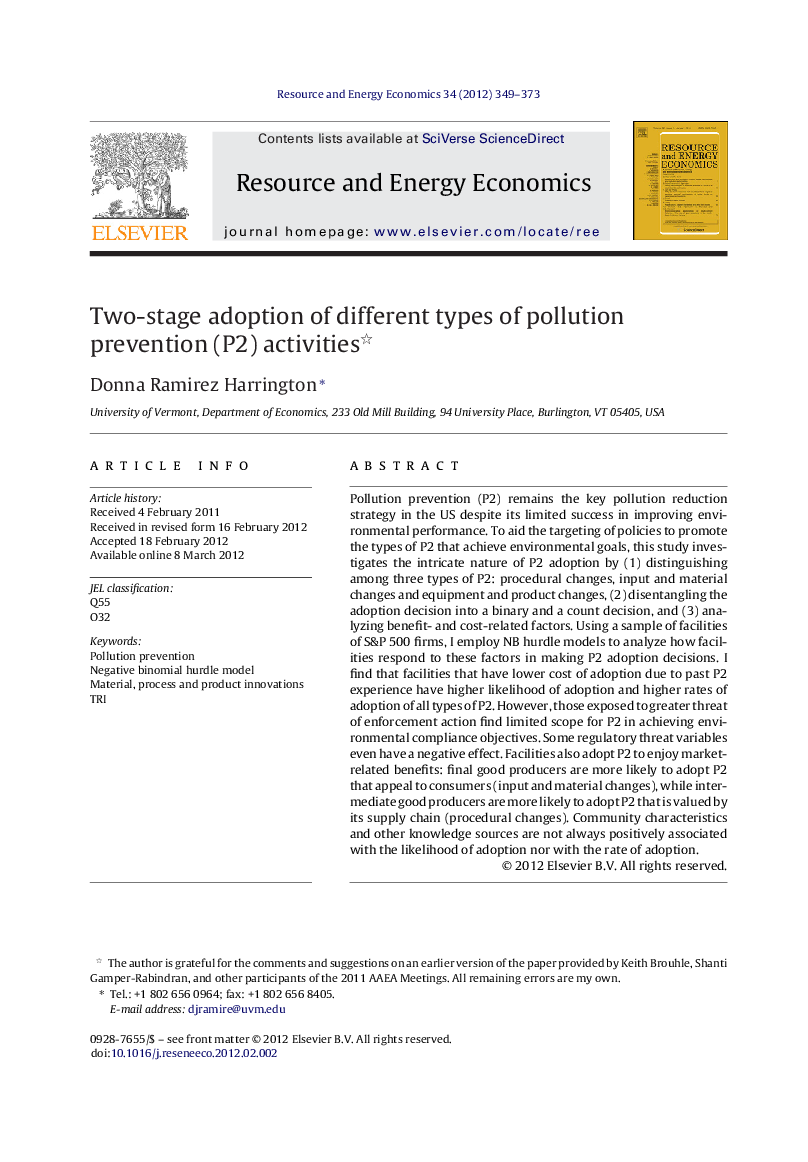| کد مقاله | کد نشریه | سال انتشار | مقاله انگلیسی | نسخه تمام متن |
|---|---|---|---|---|
| 985458 | 934596 | 2012 | 25 صفحه PDF | دانلود رایگان |

Pollution prevention (P2) remains the key pollution reduction strategy in the US despite its limited success in improving environmental performance. To aid the targeting of policies to promote the types of P2 that achieve environmental goals, this study investigates the intricate nature of P2 adoption by (1) distinguishing among three types of P2: procedural changes, input and material changes and equipment and product changes, (2) disentangling the adoption decision into a binary and a count decision, and (3) analyzing benefit- and cost-related factors. Using a sample of facilities of S&P 500 firms, I employ NB hurdle models to analyze how facilities respond to these factors in making P2 adoption decisions. I find that facilities that have lower cost of adoption due to past P2 experience have higher likelihood of adoption and higher rates of adoption of all types of P2. However, those exposed to greater threat of enforcement action find limited scope for P2 in achieving environmental compliance objectives. Some regulatory threat variables even have a negative effect. Facilities also adopt P2 to enjoy market-related benefits: final good producers are more likely to adopt P2 that appeal to consumers (input and material changes), while intermediate good producers are more likely to adopt P2 that is valued by its supply chain (procedural changes). Community characteristics and other knowledge sources are not always positively associated with the likelihood of adoption nor with the rate of adoption.
► General past experience increases the likelihood of adopting all types of P2.
► Practice-specific experience promotes adoption of higher counts of all types of P2.
► Specific deterrence has a limited impact on P2, and general deterrence may have a negative impact on P2.
► The types of P2 adopted by final good producers are different from those adopted by intermediate good producers.
► Community characteristics do not encourage higher rates of P2 adoption.
Journal: Resource and Energy Economics - Volume 34, Issue 3, September 2012, Pages 349–373